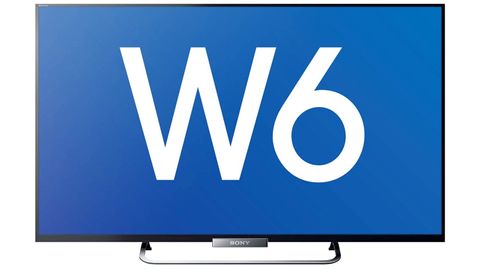Why you can trust TechRadar
Thankfully, the 42W653A quickly sets about comprehensively laying to rest the troubling ghost of its 47W805A sibling by producing some extremely robust black levels.
We piped a series of dark scenes into the set, and with every one of them we were impressed by both the naturalism and depth of the set's black colour reproduction. There's much less evidence of the grey clouding effect than we saw on the 47W805A. Shadow detailing is also much more evident, helping dark scenes achieve a sense of depth and texture that's more evenly matched with the look of bright scenes. This greater sense of spatial consistency with dark and light content is, of course, essential to producing an immersive, natural viewing experience.
It's a relief to see, too, that the 42W653A suffers scarcely at all from the sort of backlight clouding/inconsistencies that were once a recurring issue for Sony LCD TVs. Feeding it a black image with a bright white circle in the middle, with the backlight set to a sensibly low level, resulted in only the faintest trace of excess brightness in the TV's corners. This inconsistency is so subtle that it's pretty much undetectable during normal viewing, especially if there's any ambient light in your viewing room.
On the dark side
Being able to produce a credible black colour plays an important role, too, in bolstering the naturalism of dark scenes by enabling the 42W653A to produce a wider, subtler and more realistic-looking set of colour tones during dark scenes.
Don't start thinking at this point that the 42W653A delivers the goods with dark scenes as well as higher-end models like Sony's own W905A series or Samsung's F7000 and especially F8000 TVs. It doesn't get as black as those models, and also isn't quite as clever with its light management. Its dark scenes lack some of the punch and subtle detailing you get with the higher-end models. But for its money, the 42W653A's contrast performance can be considered seriously accomplished.

It's not only with dark scenes that the 42W653A impresses, either. It's got enough range and vibrancy to its colour palette to handle bright, colourful content eye-catchingly well too. Yet the power of its video processing means that this colour punch doesn't come at the expense of tonal subtlety. There's enough finesse in the 42W653A's tonal blends to make sure skin tones don't look plasticky, and there's little to no evidence of colour banding.
Upscaled colour
Nor is the colour richness beset by noise or colour bleed. In fact, noise levels generally are well controlled. This even holds true when watching standard definition upscaled to the screen's full HD resolution, as Sony's X-Reality Pro image processing centre proves far cleverer than the majority of picture engines in the sub-£600 42-inch marketplace. This is especially true when it comes to adding detail to standard definition sources while simultaneously stripping out MPEG blocking and mosquito noise.
Even ropey web-sourced content holds up pretty well on the 42W653A, such is the processing prowess on offer.
Yet another strong point of the 42W653A's performance compared with most similarly affordable TVs is the clarity of its HD images. It does a crisp job of reproducing every last detail of an HD source, and the set's motion handling is unusually clean. It doesn't suffer from the overt smearing over moving objects still seen on some budget TVs, and nor is judder severe enough to become a major distraction. In fact it's not a distraction at all if you employ the set's motion processing – and that processing's Clean setting is gentle enough to deliver de-juddering benefits without making the picture look unnatural.
John has been writing about home entertainment technology for more than two decades - an especially impressive feat considering he still claims to only be 35 years old (yeah, right). In that time he’s reviewed hundreds if not thousands of TVs, projectors and speakers, and spent frankly far too long sitting by himself in a dark room.


